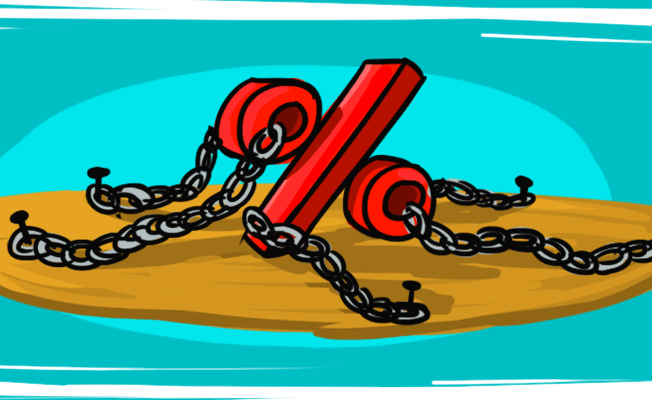The Reserve Bank of India (RBI) in its policy meet on 7th December, 2016, decided to leave interest rates unchanged. The repo rate will remain at 6.25%. For the uninitiated, repo rate represents the rate at which the central bank lends to all the commercial banks in India. So, if interest rates remain the same, there are little chances of banks cutting deposit and lending rates in the coming months.
Why did the RBI take this stance? According to RBI’s policy statement, “The decision of the Monetary Policy Committee (MPC) is consistent with an accommodative stance of monetary policy in consonance with the objective of achieving Consumer Price Index (CPI) inflation at 5% by Q4 of 2016-17 and the medium-term target of 4% within a band of +/- 2 per cent, while supporting growth.”
What does this mean for you?
If you are a borrower, you must know that if the RBI keeps rates unchanged, lenders might want to keep their loan rates unchanged too. However, this matters only if you have floating rate loans, which are reset whenever the interest rates are changed by the RBI. This is why going for floating rate loans might be more beneficial in the present interest rate scenario. If you want to go for a loan now, note that loan rates have already come down significantly over the past year, this includes rates for Home Loans, Car Loans and Personal Loans.
If you are an investor who likes to go for safe investments such as bank Fixed Deposits, then, you can heave a sigh of relief. Fixed Deposit rates that have been falling might remain stable for some more months. In the past year, Fixed Deposit rates have fallen from 8%-9% to 6.5%-7%, today.
What are experts saying?
Here’s what industry experts have to say about the latest monetary policy.
Adhil Shetty, CEO, Bankbazaar.com
“Given the recent demonetisation drive and global uncertainty, the RBI retaining the repo rate makes perfect sense. Banks have already cut their lending rates and more such cuts cannot be ruled out in the coming months, which is good news for borrowers. This will be mainly on the back of the demonetisation drive that has led to excess liquidity. We do expect the RBI to cut interest rates next year, given the risks of slower growth.”
Killol Pandya, Head Fixed Income, Peerless Funds Management Company Ltd
“RBI has kept a status quo in the interest rates for now. While some participants were expecting a 25 bps cut there was always a good probability of status quo. The upcoming FOMC meet in which a US rate hike is widely expected, upside risks to inflation and the expected resumption of relative normalcy in market liquidity seem to be the main drivers behind RBI’s decision. The withdrawal of CRR also seems to be in line with the RBI’s comprehensive policy of managing market liquidity through MSS and other OMO routes. The policy may have short-term negative impact on the market but seems constructive from a medium to long-term perspective.”
Murthy Nagarajan, Head – Fixed Income, Quantum AMC
“A superb move by the RBI and MPC to not cut the repo rate. There were questions being raised on the RBI’s independence and Dr. Patel’s silence on the demonetisation issue, but with this non-consensus move of holding rates steady, we believe the RBI has made a big statement towards its independence and objectivity. This, however, does not rule out further rate cuts and if the impact of demonetisation does indeed lead to lower inflation and slower growth, then the RBI will look to cut rates in its February policy review. By February, the RBI will have greater clarity on the global situation (FED rate hike and Donald Trump’s policies) and on India’s fiscal deficit for FY 2017-18, which will allow them to take a more balanced view.”
Additional Reading: Double Whammy: The Dual Effect Of Trump And Demonetisation On Indian Investments
Karthikraj Lakshmanan, Senior Fund Manager – Equities, BNP Paribas Mutual Fund
“Contrary to market expectations, the Reserve Bank of India (RBI) kept repo rates unchanged at 6.25%. Additionally, the RBI has trimmed Gross Domestic Product (GDP) growth forecast for the current fiscal year to 7.1% from a previous forecast of 7.6%. The central bank believes that the recent demonetisation of certain currency notes is likely to have a near-term negative impact on economic activity. In the wake of the above announcement, the benchmark Sensex and the Nifty closed the day (7th December) with losses of over 0.5%.”
Lakshmi Iyer, Chief Investment Officer (Debt) & Head of Products, Kotak Mutual Fund
“Unchanged policy rate was a surprise for the market. Hardening of yields in most of the developed nations along with forex volatility may have heightened RBI’s risk perception. At that, the spike in international oil prices and stickiness in inflation seems to outweigh concerns for growth. RBI’s lower projection of growth of real gross value added (GVA) is because of lower Q2 numbers rather than its estimate on slowdown due to demonetisation. RBI seems to be awaiting further data to assess impact of demonetisation on growth. RBI’s assessment of inflation continues to be at 5% by Mar-2017. We believe that CPI inflation would be at around 4.5% by Mar-2017 and thus expect that RBI has a 25-50 bps window for effecting a rate cut in the near future. Were the economy to not perform as per expectation over next 2-3 quarters, the central banker’s appetite for rate cut could increase further.”
Additional Reading: Demonetisation: Are You Aware Of The Rules?
So, why not go for those loans that you need, right away? You can choose floating-rate loans if you want to take advantage of falling interest rates. Always compare across lenders to get the best rates and terms.
